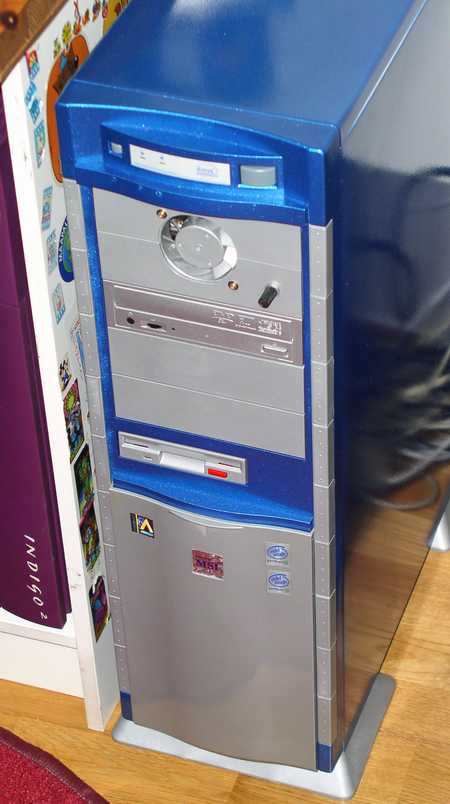| HOSTNAME |
TARKUS |
| SYSTEM CPU |
2 x Intel Pentium III Coppermine @1100MHz |
| CACHE
(2nd, 1st D/I) |
2 x 256 KB, 16 KB / 16 KB |
| RAM |
512 MB PC-133 SDRAM (Max. 1024 MB) |
| IDE BUS |
2 x Ultra ATA (Max. 66.6 MB/s) and 2 x
Promise Ultra ATA (Max. 100 MB/s) |
SCSI
BUS
|
1 x Ultra160 SCSI LVD (Max.
160 MB/s) Adaptec 19160 host adapter card
|
| OPTION BUS |
1 x AGP slot, 5 x PCI slots and 2 x
ISA slots
|
| GRAPHICS |
Gainward GeForce2 MX400 64MB AGP Max.
1792x1344 for 32-plane @75Hz |
DISPLAY
|
19" Nokia 930C
Flat Trinitron (CRT) monitor*
|
| HARD DISK DRIVES |
36GB IBM 10K RPM U160 SCSI (system disk),
18GB
Seagate Cheetah 10K RPM U160, 120GB
Maxtor 7200 RPM ATA-100
|
| DVD DRIVE |
8x NEC Dual Layer DVD+-R/RW DVD Writer
ATA-33
|
FLOPPY
DRIVE
|
1.44MB Floppy drive
|
| NETWORK |
10/100baseT noname network card |
| AUDIO |
SoundBlaster Live! Platinum PCI card and
onboard
AC97 chip |
| OS |
Windows 2000 SP4, and sometimes KNOPPIX |
| YEAR |
2000
|
| SPEED |
1100 VAX MIPS
per
processor (about 2200 VAX MIPS total, for applications that use
multi-threading
)
|
| COMMENTS |
This computer is my fastest one to work
with
at home. At work I use an IBM T41, a P4 (Centrino) built 2004, but that
computer
is slower on some things, it's just a laptop. |
ESTIMATED
PRICE '00
|
N/A (the system's
configuration has changed too much, over the years ...)
|
